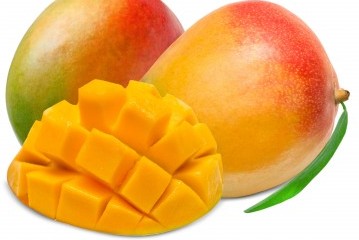Value addition through corn flour fortification with mango powder
By Milton Ogada on 8th October 2015 | Publications 1 0
"ENHANCING CLIMATE RESILIENCE AND NUTRITION UPTAKE THROUGH THE FORTIFICATION OF CORN FLOUR WITH LOCALLY PRODUCED HIGH NUTRITION VALUE CROPS (MANGO)"
Origin of Mangoes
Mango origin can be traced from India in Indo-Burma around 4000 years ago. Introduction of the mango to East and West Africa and subsequently to Brazil is said to have occurred in the sixteenth century.
Mangoes productivity holds a great potential to improve farmer’s livelihoods. Depending on the variety, the time from flowering to maturity is 100-150 days. Under good management 400-600 fruits per tree per year can be produced. Yield range is 10-16 ton/ha 4 depending on management, variety and age of orchard. In the case of improved varieties, fruits can weigh 0.3 – 2 kg
each (http://www.naads.or.ug/data/program/2/ATAAS%20Project.html)Despite this potential, mango farmers in Kitui County have not been able to exploit it together with various markets that exist for mangoes and its products. This background underscored the necessity of the intervention “Enhancing climate resilience and nutrition uptake through the fortification of corn flour with locally produced high nutrition value crops (mango)” been implemented in Kitui County by Green Africa Foundation in Partnership with NETFUND funded by IGAD.
The goal of this project is to improve livelihoods of the drylands communities in Kitui County through increased income earned from mango fruits. The project purposes to improve value addition to mango fruit through mango powder technology.
A baseline survey was conducted initially to inform the whole process and ensure farmer needs were addressed. The challenges identified determined the project activities.
Project milestonesThe training is impacting on farmers to improve on both quantity and quality production of mangoes. Enterprise selection, record keeping; nursery management; Farm management; post-harvest and value addition; profit analysis and marketing are the main sections of the training.
Farmer/ Community Confessions"The training on best mango practices was like an eye opener for me. I have increased my mango trees from 25 to 92. And now that I understand better the benefits of mango farming; I will not fail like previously where I lost 50 mango trees to livestock by been eaten by "Mbuzi'' (goats). We have shared duties with my wife. As she attends to customers in our retail shop in the nearby market, I will stay at the farm to ensure all is well. We don’t have enough money to fence the farm but we indent to use the income from integrated vegetables to fence. Thanks to the training on Crop intercropping." --Paul Muthui Kinandu (A farmer in Katse, Mwingi North Sub-County.
"…………..we are happy that IGAD through Green Africa Foundation, NETFUND, MUKY-ORDAP and other partners have considered to compliment Ministry’s of Agriculture work of training farmers in GAPs. We are confident and happy that this intervention is promoting an environment for a food secure society…………..." Nicodemus Munyithya (Extension officer- Ministry of Agriculture, water and Irrigation Kitui Conty)
Ann Mwikali Musyoka, a farmer from Manyanga Farmer Group says that the training came at a time when she needed it most. Her 200 Mango trees in a 3ha of land have recently dropped in production from 600 mango fruits per tree to an average of 150 mangoes. This has been as a result from high Infestation and infection from gall midges and powdery mildew. "I now know how I will manage them and get my Mango trees back to their higher productivity" She appreciates. She plans to plant more mango trees in her new 4ha of land.
